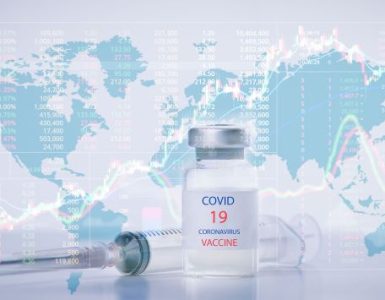 One of the major arguments levied against vaccination is the woefully low rate of efficacy and effectiveness of many vaccines. Just published in the journal Nature Biotechnology is the discovery of a new compound which increases the effect of vaccines against viruses like flu, HIV and herpes.
One of the major arguments levied against vaccination is the woefully low rate of efficacy and effectiveness of many vaccines. Just published in the journal Nature Biotechnology is the discovery of a new compound which increases the effect of vaccines against viruses like flu, HIV and herpes.
When talking about vaccines, efficacy relates to the ability of the vaccine to stimulate the body to produce antibodies against a particular disease. The effectiveness of a vaccine relates to the percentage of people it will actually prevent the disease occurring in, in real life. Flu vaccines, for instance, have an average efficacy rate of 59% across all age groups and an effectiveness of 35%, according to a recent meta-analysis from researchers at the Center for Infectious Disease Research and Policy, University of Minnesota.
Researchers at Oxford University have been studying the effects of a new adjuvant in mice. An adjuvant is a chemical added to a vaccine to irritate the tissue, thus encouraging a more robust response from the immune system. The stronger the response from the immune system, the more antibodies will be created and, theoretically, the better protected the individual will be from contracting the disease vaccinated against.
Traditionally, aluminium has been used as an adjuvant in many vaccines, although it is not that strong an adjuvant and many people remain concerned over both the short and long-term effects of injecting aluminium into the body, particularly in children. A new option may soon be available in the form of a polymer called polyethyleneimine (PEI), a standard polymer often used in genetic and cell biology, which has strong adjuvant activity and has been found in mouse studies to be a much more potent adjuvant for the vaccines tested.
Mice given a single dose of a flu vaccine including PEI via a nasal droplet were completely protected against a lethal dose of flu. This was a marked improvement over mice given the flu vaccine without an adjuvant or in formulations with other adjuvants.
The Oxford researchers have successfully tested the new adjuvant in rabbits, indicating that the effect is not limited to mice and now intend to test it in ferrets, a better animal model for studying flu. They also want to understand how long the protection lasts for. It is likely to be a couple of years before a flu vaccine using the adjuvant could be tested in clinical trials in humans, the researchers say.
‘Gaining complete protection against flu from just one immunisation is pretty unheard of, even in a study in mice,’ says Professor Quentin Sattentau of the Dunn School of Pathology at Oxford University, who led the work. ‘This gives us confidence that PEI has the potential to be a potent adjuvant for vaccines against viruses like flu or HIV, though there are many steps ahead if it is ever to be used in humans.’
HIV, flu and herpes are some of the most difficult targets to develop vaccines against. HIV and flu viruses are able to change and evolve to escape immune responses stimulated by vaccines. There aren’t any effective vaccines against HIV and herpes as yet, and the flu vaccine needs reformulating each year and doesn’t offer complete protection to everyone who receives it. Finding better adjuvants could help in developing more effective vaccines against these diseases.
Most vaccines include an adjuvant. The main ingredient of the vaccine – whether it is a dead or disabled pathogen, or just a part of the virus or bacteria causing the disease – primes the body’s immune system so it knows what to attack in case of infection. But the adjuvant is needed as well to stimulate another part of the immune system which triggers this process.
While the need for adjuvants in vaccines has been recognised for nearly 100 years, the way adjuvants work has only recently been understood. The result has been that only a small set of adjuvants is used in current vaccines, often for historical reasons.
‘There is a need to develop new adjuvants to get the most appropriate immune response from vaccines,’ says Professor Sattentau, who is also a James Martin Senior Fellow at the Oxford Martin School, University of Oxford.
The body’s immune system is made up of two distinct arms: the innate immune system and the adaptive immune system. The adaptive immune system consists of the specific antibodies and immune cells (T and B cells) the body develops to combat a particular foreign agent.
The innate immune system which includes specialised cells like macrophages which engulf foreign proteins and destroy them, had been thought of as playing a more primitive, non-specific role in protecting against invaders like viruses and parasites. It is now known, however, that in order to generate an effective adaptive immune response, the innate immune system must first activate it and then tailor the body’s adaptive immune response, selecting the particular mix of antibodies and T cells needed and teaching them what to attack.
Because it is the adjuvants in vaccines that stimulate the innate immune system, having the right adjuvant can help the body produce the most appropriate immune response to protect against future infection.
When included in a vaccine with a protein from HIV, flu or herpes virus, mice subsequently mounted a strong immune response against that virus. The immune response was stronger than with other adjuvants that are currently being investigated.
Another potential advantage of PEI is that it works well as an adjuvant for ‘mucosal vaccines’. These vaccines are taken up the nose or in the mouth and absorbed through the mucus-lined tissues there, getting rid of any pain and anxiety from a needle. Mucosal vaccines may also be better in some ways as mucosal tissues are the sites of infection for these diseases (airways for respiratory diseases, genital mucosa for HIV and herpes).
Professor Sattentau suggests that: ‘In the best of all possible worlds, you could imagine people would have one dose of flu vaccine that they’d just sniff up their nose or put under their tongue. And that would be it: no injections and they’d be protected from flu for a number of years.
‘It’s just a vision for the future at the moment, but this promising adjuvant suggests it is a vision that is at least possible.’
The study was funded by the UK Medical Research Council, European Commission, the International AIDS Vaccine Initiative (IAVI), the Bill and Melinda Gates Foundation and Dormeur Investment Service Ltd.
Source: Examiner.com

















